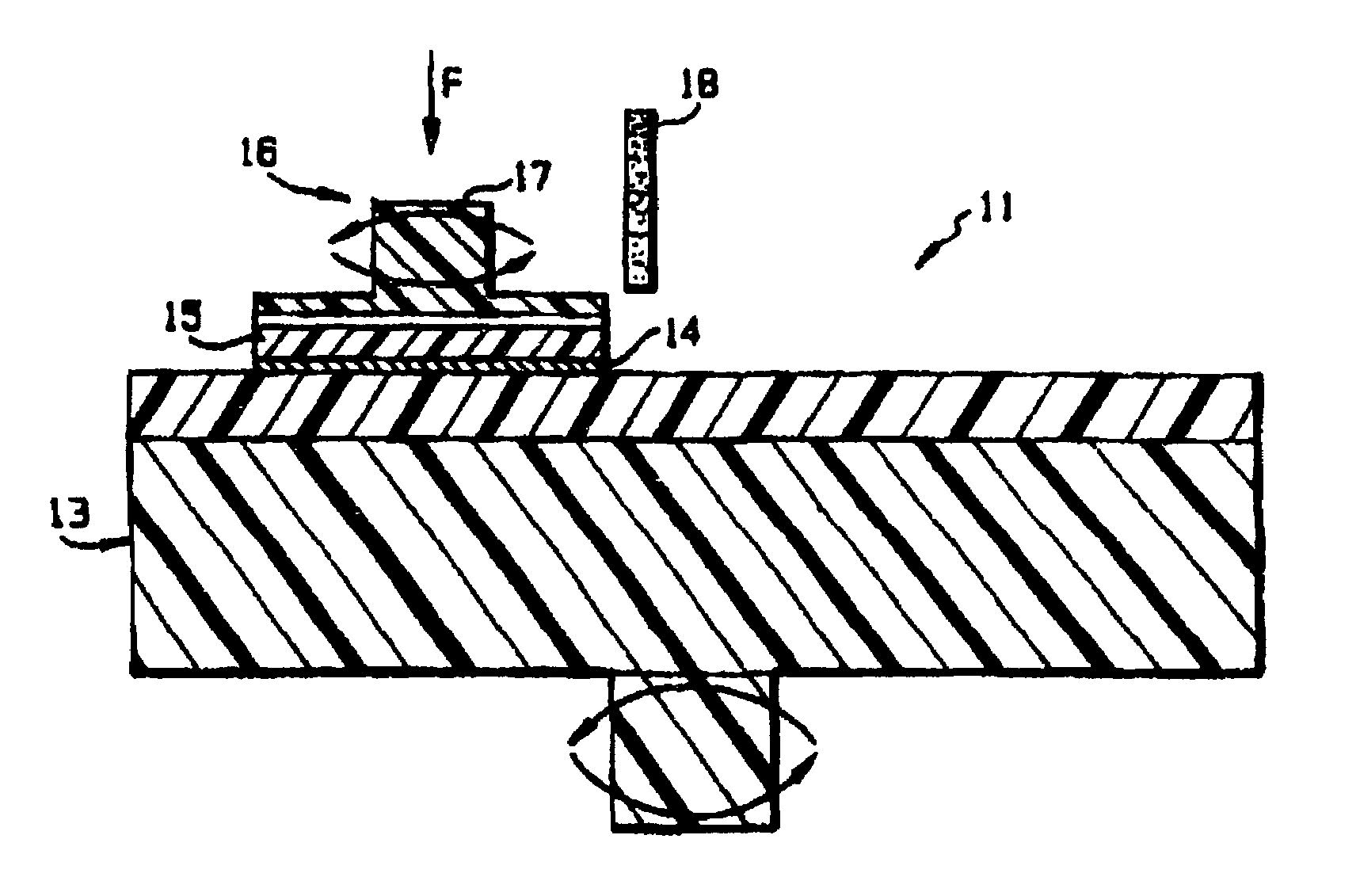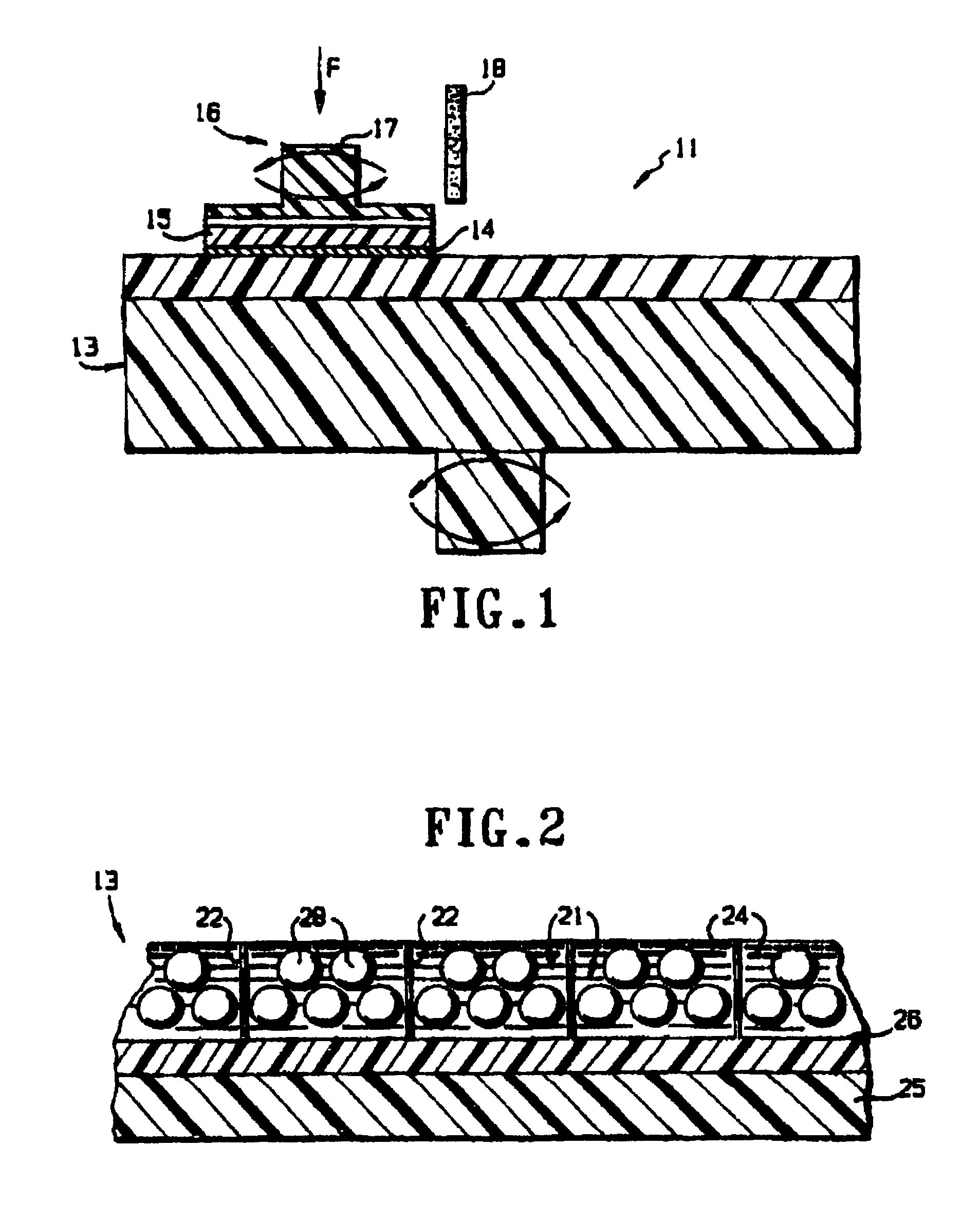Chemical mechanical polishing slurry
a technology of mechanical polishing and slurry, applied in the field of chemical mechanical polishing, can solve the problems of increasing the cost of slurry, the problem of reducing the work efficiency of workers, and the difficulty of achieving the effect of reducing the damage to the working quality
- Summary
- Abstract
- Description
- Claims
- Application Information
AI Technical Summary
Benefits of technology
Problems solved by technology
Method used
Image
Examples
Embodiment Construction
[0037]A principal planarizing problem is the difficulty of maintaining a uniform, high-quality liquid slurry of planarizing suspension. This suspension must be reproducible, not easily damaged and, therefore, longer lasting. A new planarizing suspension is designed to maintain the solid abrasive particles “forever-sharp” during processing, use, transit, or even storage of the liquid abrasive suspensions.
[0038]Each of the very fine, micron or nanometer size range solid abrasive particles (typically of Al2O3 or CeO) has many tiny, rigid, sharp, yet brittle working edges and points on its outer surfaces. The shape, size, perfection, and sharpness of these microscopic planarizing edges and points determine the cost, life, and performance of the planarizing liquid suspension slurry and, in fact, the entire planarizing operation.
[0039]During their useful life, the solid abrasive particles, together with their sharp edges and points, continuously touch, contact, impact, and degrade one ano...
PUM
| Property | Measurement | Unit |
|---|---|---|
| density | aaaaa | aaaaa |
| sizes | aaaaa | aaaaa |
| pressure | aaaaa | aaaaa |
Abstract
Description
Claims
Application Information
 Login to View More
Login to View More - R&D
- Intellectual Property
- Life Sciences
- Materials
- Tech Scout
- Unparalleled Data Quality
- Higher Quality Content
- 60% Fewer Hallucinations
Browse by: Latest US Patents, China's latest patents, Technical Efficacy Thesaurus, Application Domain, Technology Topic, Popular Technical Reports.
© 2025 PatSnap. All rights reserved.Legal|Privacy policy|Modern Slavery Act Transparency Statement|Sitemap|About US| Contact US: help@patsnap.com


